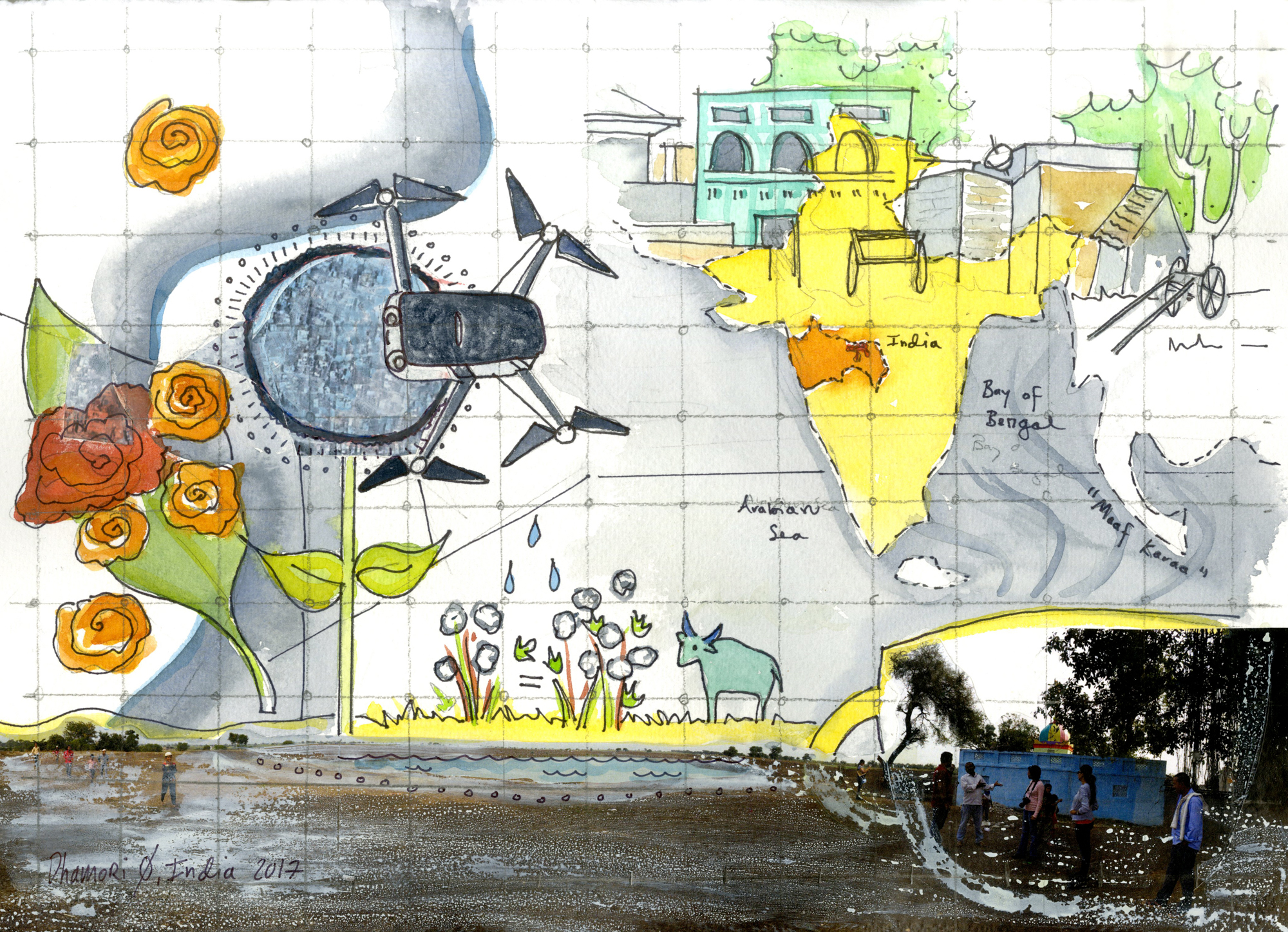This July, four million people in Cape Town, South Africa, may be without water, their pipes dry as the city succumbs to a devastating drought. Around the world, governments and their citizens are grappling with issues of water availability, cleanliness, and management.

In her senior capstone, MLA student Leslie Johnson addresses these issues in the village of Dhamori, India with the hope that her research may one day be scaled up to help others. “I wanted to work with water issues because they are so vast and multifaceted. I think design is a great way to address some of those issues because I don’t think they can be handled in a set, siloed way,” said Johnson.
Johnson became interested in water management after connecting with University of Florida Assistant Professor Alpa Nawre at the 2017 Landscape Architecture Foundation Summit. Nawre invited Johnson to join her five-person research team and help create a report on how to improve the water management practices in Dhamori.
“In the village of Dhamori, water is a big issue, not necessarily for drinking but for irrigation availability. The team I was working with explored different water management strategies to try and incorporate those practices into solving this issue. One of the main things we looked at were farm ponds,” explained Johnson. “Farm ponds were used in India prior to colonization, not only to hold excess water but as gathering places for the village. My current capstone work expands upon these ideas, especially related to traditional rainwater harvesting techniques.”
Many farm ponds in the region surrounding Dhamori are now defunct or unable to hold water. Johnson helped conduct public workshops and canvas local community members to devise a set of strategies that would encourage the utilization of farm ponds. “It was very important to us that we provide strategies that were not reliant on outsiders. We wanted to make sure that we had local stakeholders taking part and getting interested in the work, to ensure that these practices aligned to what Dhamori residents wanted and become self-sustaining,” said Johnson.
Upon its completion, the report was given to a member of India’s parliament, which has sparked interest from other members of parliament and led to an invitation for Nawre and her team to conduct research across a larger area. “I think it would be exciting if the research I’ve developed throughout my capstone could be taken and applied as a general framework for other groups to use to address their own water issues,” concluded Johnson.
With the highest maternal mortality ratio in the world, Sierra Leone is one of the most dangerous countries for women to give birth.¹ Architecture graduate student Gauri Kelkar’s final project is helping to change that.
On November 24, 2016, the Colombian government and the Fuerzas Armadas Revolucionarias de Colombia (FARC) signed a peace accord after over 50 years of armed conflict. As the country tries to move forward Daniela Duque Quevedo and Danielle Jurichko, two students in the College of Design’s Master of Landscape Architecture program, are exploring how design and landscape architecture can help provide a space for healing.
A collaboration between Professor Abimbola Asojo (Interior Design) and Professors Dolapo Amole and Babatunde Jaiyeoba of Obafemi Awolowo University (OAU) in lle-lfe, Osun, Nigeria has culminated in the development of the first interior design program at a Nigerian university.





